This post may contain affiliate links. If you make a purchase through a link, I may receive a small commission, at no cost to you. These commissions help keep this website up and running, and I thank you for your support. Read my full disclosure here.
Disclaimers: I paid for these products myself. I have in no way been influenced or paid to endorse these products. All recommendations and opinions are my own.
I have really enjoyed using moisturisers containing retinol such as Aldi’s budget friendly Lacura Face Care Q10 anti-wrinkle night cream. However, as my skin continues to age, I’ve felt the need to up my game. I was in search of something stronger to tackle the onslaught of fine lines, wrinkles, and hyperpigmentation (read about my attempts to get rid of my hyperpigmentation in my post My TCA Chemical Peel Experience). It was also winter at the time, and my skin was looking super dull and rough, which made me look even older.
I had really wanted to try some stronger retinol products, but had been put off by the high prices. However, I had been hearing all the hype around The Ordinary products and how they were selling quality skin care with formulations for a fraction of the usual price, so I decided to buy some of their retinol. I jumped on line to order some but was thwarted because it was completely sold out. Nevertheless, I was keen to get my hands on some so I signed up for several websites email alerts so I would be emailed when they were back in stock. Finally, about four weeks later, I received the email I had been waiting for and excitedly ordered some. I’ve been using The Ordinary Retinol in Squalane for 6 months now, so I decided to share my experience and also what I’ve learnt about retinol along the way.
What Is Retinol, Where Does It Come from and What Does It Do?
You may have heard that retinol is the ‘gold standard’ of anti-ageing ingredient in skin care. It is actually naturally produced by your body and also known as Vitamin A1. It is commonly used as a dietary supplement because our body needs vitamin A to function. However, it is very popular to use in skin care formulations, as they stimulate the production of new skin cells. As well as reducing the depth of fine lines, they can also help to fade dark spots caused from photo-ageing, hyperpigmentation, hormonal changes, and blemish scars.
The down side to retinol is that it’s highly-reactive, meaning it can break down quickly and lose its potency, especially when it is exposed to sunlight or air. In poor quality skin care products, this may mean that the retinol it initially contained quickly becomes ineffective.
Retinol also increases your sensitivity to the sun, so only use it at night, and ensure you use a strong sunscreen during the day – even if you are mostly sitting inside. Otherwise you will ruin any of the good work that the retinol is doing. Check out my post on My Favourite Sunscreens for Face and Body This Summer.
What is the Difference Between Retinoids, Retinols, and Retin-A?
Confused? I was too. The term ‘retinoid’ describes a family of ingredients that includes both retin-A and retinol. When the term retinoid is used in skincare products, it’s important to remember that it is an umbrella term and doesn’t actually specify the type of retinoid compound in the formula.
Retinols
When retinol is applied, enzymes in your skin convert it into retinaldehyde and then into retinoic acid. Because the enzymes have to convert the retinol, it is gentler on your skin and has fewer side effects. Therefore, this is the most popular form of retinoid in off the shelf skin care. However, you must be patient when waiting to see results, because the conversion to retinoic acid can take at least a few weeks, which is why you should use retinol consistently for a few months before deciding whether or not it works for you.
Retin-A
Retin-A is a much stronger, prescription-only type of retinoid. It is sold in the form of tretinoin cream which is another name for retinoic acid. Retin-A does not need to be broken down by the enzymes in your skin before it can be used, BUT retin-A products must be used with caution as they are approximately 100 times stronger than the average retinol cream you get over the counter. However, you will see dramatic results, but it can cause itching, scaly, red skin when you start using it.
If you are still completely confused, then Cheryl Woodman at Honesty For Your Skin provides a Retin-dictionary in her helpful post Retinol vs. Retinoid.
What Strength Retinol Should I Use?
The Ordinary sell their retinol range in three strengths:
- Retinol 0.2% in Squalane (Low Strength, Moderate Irritation)
- Retinol 0.5% in Squalane (Moderate Strength, High Irritation)
- Retinol 1% in Squalane (High Strength, Very High Irritation)
All three are suspended in squalane. If you haven’t used retinol before, you should really start with the weakest 0.2% strength and introduce it to your skin slowly to see how it responds. Once you’ve finished that bottle, then move up to the 0.5%. Only move up to the 1% if you feel comfortable doing so.
If you have sensitive skin, then start with The Ordinary’s Granactive Retinoid range. It’s supposed to deliver similar results in a much gentler formula.
- Granactive Retinoid 2% Emulsion (Moderate Strength, No Irritation)
- Granactive Retinoid 2% in Squalane (Moderate Strength, No Irritation)
- Granactive Retinoid 5% in Squalane (High Strength, No to Low Irritation)
I go into a bit more detail below about how I introduced it to my skin. I started with the 0.5% strength and hope to move up to the 1% when I’m finished.
The Ordinary Retinol in Squalane 30ml
The Claims
The Ordinary claims that their product is a highly stable, water-free, and high strength, age-defying solution of retinol. This special form of vitamin A has been proven to minimise fine lines, improve pigment problems, revitalise skin and make its overall appearance fresher and more youthful.
The Ordinary Retinol Ingredients
Squalane, Caprylic/Capric Triglyceride, Retinol, Solanum Lycopersicum (Tomato) Fruit Extract, Simmondsia Chinensis (Jojoba) Seed Oil, BHT.
The main ingredient in this product is squalane. I have to admit that I had never heard of squalane before. Squalane is derived from squalene oil (this is not a typo, it is spelt slightly differently) and has been used in traditional medicine for decades and is known for its healing abilities. Squalane is a more stable form of squalene and is colourless and odourless, so this is the form used in cosmetics, and in this case The Ordinary’s retinol products.
In skin care, squalane can aid the absorption of other nutrients (in this case retinol), and is a very effective moisturiser. We actually produce the oil naturally. Sadly, sharks were hunted for this oil, but it is now mostly derived from olives and sugarcane. However, when buying squalane, please ensure that it is plant derived. The Ordinary’s squalane is plant derived and its retinol range is suitable for vegans.
Alongside the squalane is the retinol and also tomato extract which contains antioxidants. In addition, it contains one of my favourite ingredients, jojoba oil, which I use in my home made skin care. Pronounced ‘ho-ho-ba’, it is technically a wax which acts as an emollient that provides a protective film over your skin to trap in moisture. It is very similar to our own sebum (skin oils), so it absorbs easily into the top layer of the skin. Due to these moisturising properties, jojoba is popular in skin care products. It’s super hydrating and its moisturising properties makes it a good skin plumper.
The final ingredient is BHA (butylated hydroxyanisole), which is a synthetic antioxidant used as a preservative in cosmetics. They are also widely used as food preservatives.
The Packaging
The Ordinary Retinol is packaged in a cardboard box. Inside it is a dark glass jar containing the retinol. The dark glass is a great for protecting the ingredients from potentially breaking down from exposure to light. However, I am very annoyed at their use of a droper as the dispenser. This means I have to open and expose the ingredients to air each time I use it. As I mentioned earlier, retinol is volatile, and I felt that the product started to change in smell and texture when I was about half way through it. I think it had started going off, and I don’t think the retinol was as effective. I wish that they would instead use a small cosmetic pump dispenser which would be much more hygienic and reduce the products exposure to air.
How to Apply The Ordinary Retinol
The directions instruct you to apply a small amount to your face in the evening as part of your skincare regimen, after water-based serums but before heavier treatments. Do not use with other retinoid treatments and avoid unprotected solar exposure. in the early stages of treatment, retinol can cause irritation, redness and peeling, especially around the eyes and mouth, whilst skin builds tolerance. If persistent irritation occurs, cease use and consult a physician. Use only as directed on unbroken skin. A patch test prior to using is advised.
When pregnant or breastfeeding, it is recommended to avoid any skincare products containing retinoids.
My Verdict on The Ordinary Retinol 0.5%
As I had used products with retinol before, I decided to start with the 0.5% strength. The oil was clear and had very little smell. It was thin and had a light consistency. I used three to four drops of the oil and massaged it onto my face and neck. It was easy to massage into my skin and absorbed well. My skin didn’t feel too oily afterwards and the next morning my skin felt nice and smooth.
My skin can be sensitive, but as I hadn’t had any previous problems with retinol, I thought I would start by using it twice a week. However, I initially experienced some sensitivity, so I reduced it to once a week for three weeks. I didn’t have any further sensitivity, so I then increased it to twice a week for another three weeks. By now my skin was tolerating it quite well, so I started using it every second day. On the alternate evenings when I wasn’t using the retinol, I used my Anti-Ageing Facial Oil that I make myself.
Apart from the initial sensitivity, my skin seemed to tolerate the retinol quite well. However, at about the four week mark I broke out in the most huge, painful, red, blind head pimples around my lower check/chin area. I smothered them in pimple cream but they just seemed to sit there and wouldn’t go away for weeks. I get pimples, but these were different from my usual ones and I don’t usually get them in this location on my face.
I spent some time on the internet to see if anyone else was having the same problem, as I know that retinol usually has the opposite effect and can help to clear up and prevent acne. But I discovered that retinol can also make your skin worse before it gets better. They even have a name for it – ‘retinol purging’ and it can take anywhere from days to weeks to clear up. Unfortunately mine took weeks. I battled on and hoped for the best, and about three to four weeks later it finally started clearing up.
After Six Months, What Effect Has Retinol Had on My Skin?
So, after six months of using The Ordinary Retinol 0.5% on my skin, have I experienced a skin care miracle? Sadly no. I was disappointed that the retinol had no effect on my hyperpigmentation, however, it did make my skin feel much smoother. I have not really noticed much effect on my fine lines or wrinkles. Maybe if I had one of those wrinkle imaging machines that dermatologists use to see the minor changes that a product can have on the wrinkle depth, I might have been able to see if there really had been any change. But to the naked eye, I notice any difference.
The Ordinary Retinol has been good value. It is much cheaper than similar products on the market, and although the bottle is a little 30ml’s, I only needed 3-4 drops for my face and neck, so it has lasted a really long time. After some initial sensitivity, my skin seemed to tolerate The Ordinary Retinol quite well. But if you have sensitive skin, then start with The Ordinary’s Granactive Retinoid range as listed above. It’s supposed to deliver similar results but in a much gentler formula.
Now that my skin is used to the 0.5% strength retinol, I think I’ll try the stronger 1% version when I’m finished to see if it will improve my fine lines.
Have You Tried The Ordinary Range of Retinol Skin Care?
Let me know in the comments below if you have tried any of the products in the The Ordinary retinoid range of skincare and whether you liked it or not.

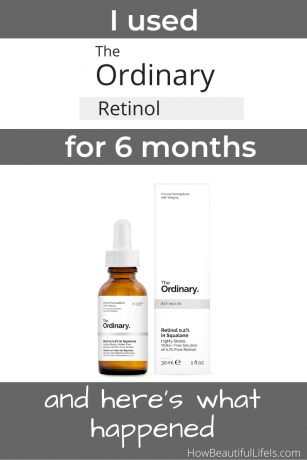


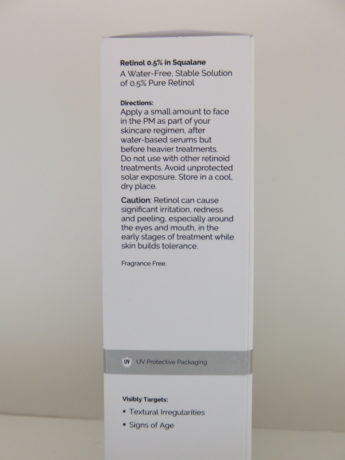

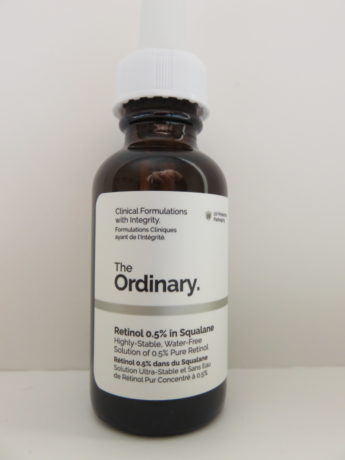
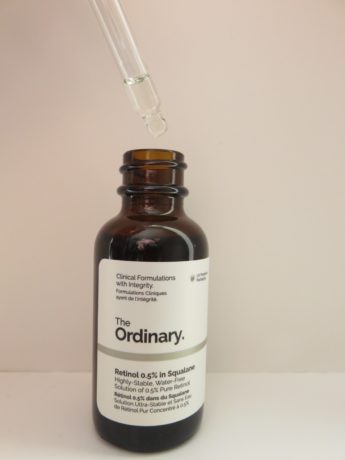
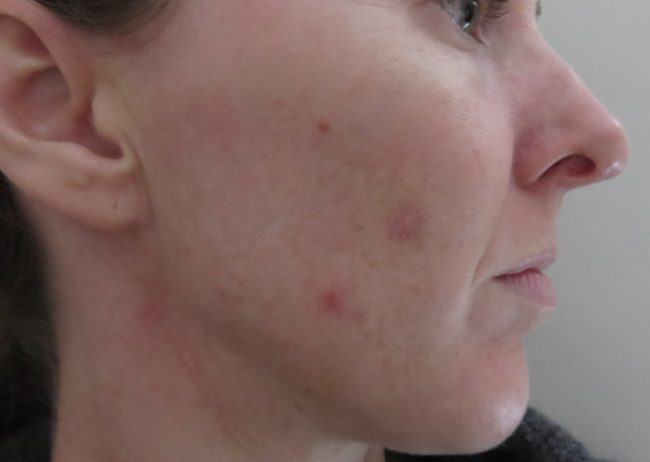
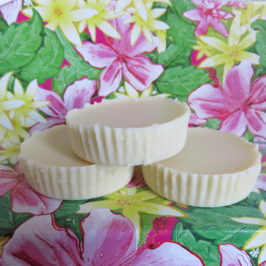
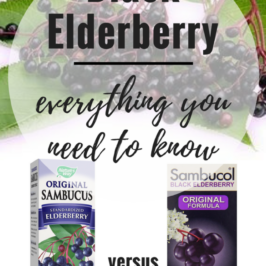
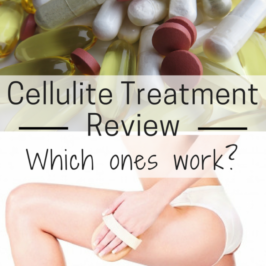
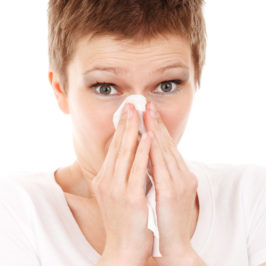
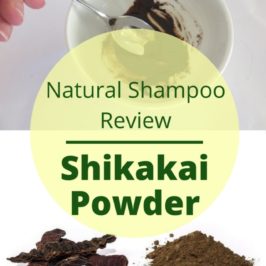
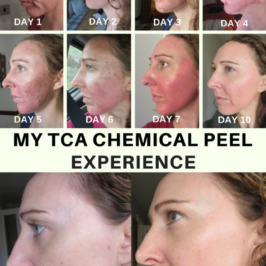
Edzus
Hi Colleen!
I’m very interested in using retinol, but after reading your post, I have doubts. I wanted to ask for an update on your journey and whether it’s worth the money if you kept using the ordinary retinol!
Greetings from Latvia,
Edzus
Colleen
I ended up changing to The Ordinary Granactive Retinoid starting at the 2% and working up from there. I found it had better results than the retinol. The tricky thing is skincare is so personal so it’s trial and error what works best on your skin.
Nikolina
Hi, thank you for the useful post!
If you could give me your insight, I would very much appreciate it.
I was using Granactive Retinoid 2% Emulsion for around year an a half. It suited me, never had any kind of irritation, so I decided to move up with something stronger. However, reading a bit more about the strength level of each one of The Ordinary retinol/retinoid, I am maybe realizing that I made a mistake by deciding to purchase Retinol 1% in Squalane as next level. So far, I’ve only used it twice, and the day after my first use, I started to feel like a burningish sensation around the eye area. And the day after my second use, I noticed a very very small bumps throughout my whole face. They’re not pimples, but like tiny bumps and my whole face kind of feel rough when I touch it. Also, it is accompanied with slightly burningish sensation throughout whole face now, as oppose to only eye area from the other day.
I’m reading a lot that it is quite expected situation when using Retinol in Squalane, but I don’t feel comfortable with it because my skin was just fine, with no particular issues and I just wanted to try something that I thought my skin would benefit from.
Should I stop using the Retinol 1% in Squalane, or better ask, would I do more damage to my skin if I just stop using it?
Thank you for your time 🙂
Colleen
I am not a dermatologist, so please seek professional advice when needed.
The Granactive Retinoid is much gentler, so perhaps stick with that type and try increasing from the 2% to 5% within the same range rather than continuing on with the Retinol, as it would seem that your skin doesn’t respond well to this type. It sounds like you are having a negative reaction which should clear once you stop using it and shouldn’t cause any long term damage.
Nikolina
Thank you very much for your input. Kind regards!
Jacyln
Thank you for this post.
Can I seek your advice on the steps required for this use of this product?
This is how I am doing it:
1. Cleanse
2. Tone
3. Water base serum
4. Apply Retinol 0.5% for up to ten mins on face and neck
5. Wash off with lukewarm water
6. Apply serum
7. Use FOREO for two minutes
8. Apply eye cream
9. Apply Moisturiser
Do I need to do a face mask as I heard the Retinol 0.5% is pretty drying for the face.
Colleen
What are your instructions on the retinol you are using? As with that strength you usually apply it at night before you go to bed and leave it on until you wake up and cleanse the next day. I do suggest using it intermittently initially so your skin gets used to it.
You can use face masks if you find it helpful.
Suhaer
Hi,
Is it ok to use retinol with a facial cleanser containing a BHA? I’ve heard that one should not pair retinol with BHA’s, but since you rinse off a cleanser, as opposed to leaving it on your skin (like with TO 2% salicylic acid), it would not cause irritation once retinol is applied?
Colleen
Typically you should use your retinol at night to avoid issues with it breaking down in light, and your BHA’s in the morning.
Reshma
Thank you so much for the blog. I was in search of such an honest post. I wanted to treat hyper pigmentation using retinol of ordinary but seems like it’s better to switch my idea of trying it. Can you please suggest me for hyper pigmentation and anti aging?
Colleen
Hi Reshma,
I think the retinol can help over time with anti-aging, but with pigmentation you need to try a range of products to see which one works for your skin. I also tried Eucerins thiamidol skin care range and have also had a TCA chemical peel. Other ingredients to try are Niacinamide and tranexamic acid.
Julie
What strength retinol is OK to use around the eyes? I am using a small sample bottle of Instacure (?) retinol on my eyes, but I have no idea of the strength. I would be happy to use two different strengths if necessary, one for face and one for eyes, The Ordinary is cheap enough.
Colleen
The strength I used was 0.5%. The eye area is extra sensitive so you need to be more cautious about using it in that area. But it comes down to what your skin can tolerate. Also, always check the label about whether you can use the product in the eye area.
Anne Sargent
Hi Colleen
I started using this product about 5 months ago. I don’t have a lots of wrinkles but some pigmentation and just needed better skin tone etc. I had great expectations as I was reading good reviews about it, but I can not honestly see any difference apart maybe my skin is a bit softer. Also I started using it almost straight away every night and no any peeling or sensitivity or breakouts. So I have decided to try something different or stronger version of retinol. I think I should have seen something by now?
Colleen
Yes, as you probably saw on my post I didn’t see any difference in my pigmentation either. After 5 months if you haven’t seen any difference then I don’t think you are going to see any further changes.
Zoe
I’m only up to night 2 of applying this product so I’m mega interested to read others’ experiences. Despite no major miracles, have u found the skin-softening effects to be worth the regime (and those initial mental-huge blind pimples)?
Colleen
I have really liked how smooth my face is when I am using it. There have been periods where I have stopped using it and I think my skin starts looking dull and rough which makes it look more aged. So although the fine lines don’t seem dramatically reduced, I think the overall affect is what keeps me using it.
Carlos
Hi Colleen!
Great post. Finally, I found someone with the same side effects I’m experiencing!
I’m also using the 0.5% retinoic acid serum by The Ordinary and got two painful, headless red blemishes around the 4-5 week.
My question is: should I continue to apply this product on these new blemishes? Would that help or would that make them worse?
Thanks for your help!
Cheers from Spain,
Carlos
Colleen
Hi Carlos,
Oooh yes, I had those too and they rather hurt! I would suggest persisting for at least two months/ 8-10 weeks to see if the retinol is going to work and the acne settle down. I just pushed through it and kept using it. Unless of course it is causing you too much discomfort. Retinol can improve acne for some people (my aim was really ageing related). Acne is so personal to each person, what may work for one, doesn’t for another.